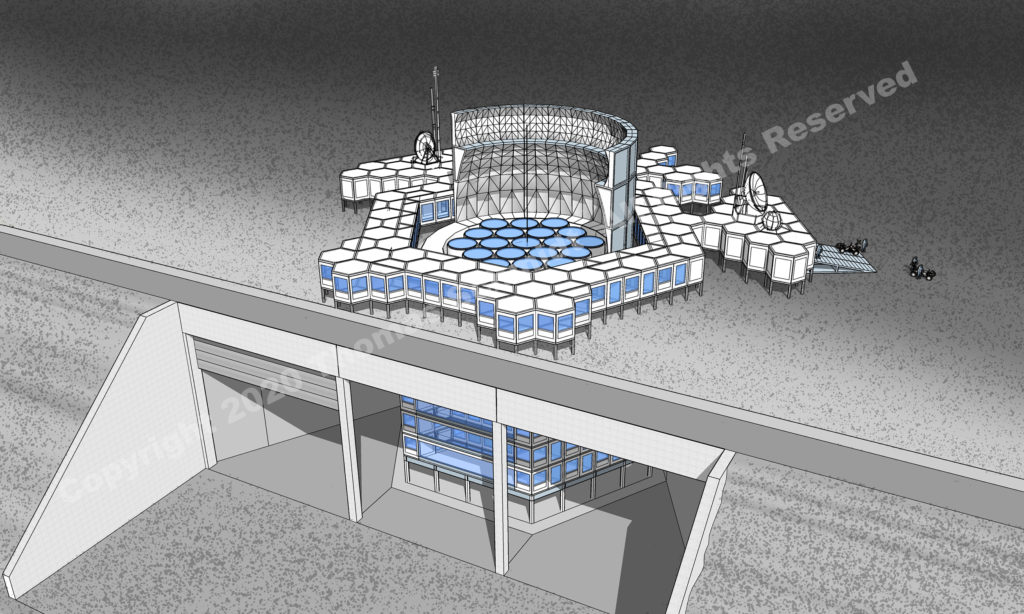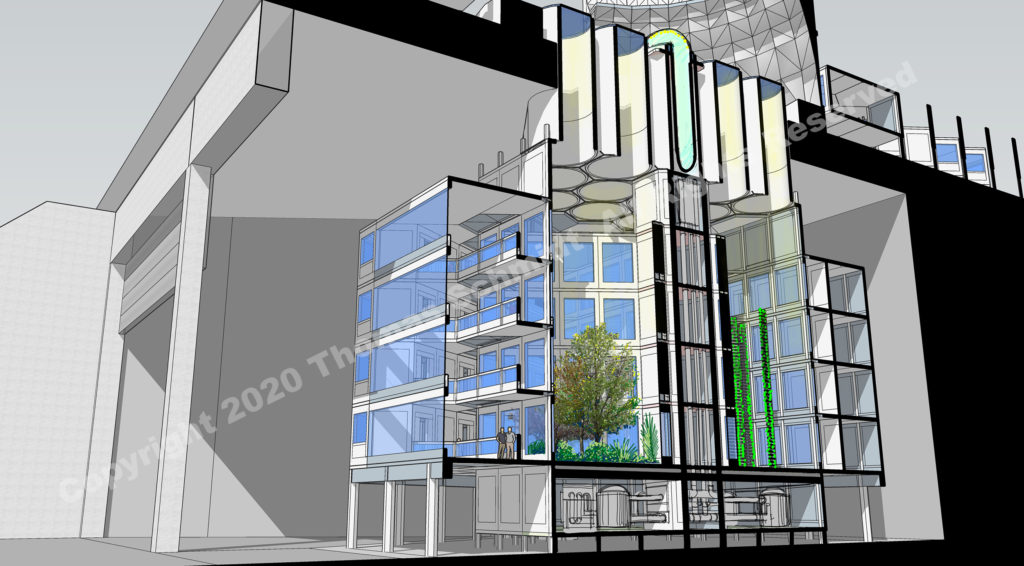Hong Kong, 19 December 2020 ————– Founder and Managing Director of Sepia Design Consultants Limited, architect Thomas Schmidt presented his award-winning Lunar Research Base concept in an International Space Architects Conference webinar, hosted by the American Institute of Aeronautics & Astronautics (AIAA).


A Hotel on the Moon?
Schmidt’s second-generation lunar research base concept proposes a modular facility nestled into the rim of a crater located at the lunar south pole. He maintains such a site can take advantage of consistent temperatures, sunlight exposure, and water deposits — while maintaining constant Earth views due to the Moon’s synchronous rotation with that of Earth.
Schmidt’s lunar habitat concept received a Technical Feasibility and Elegance Award from the AIAA in 2011, and has been subsequently refined over the past decade. While responding to a detailed facilities program, the facility is based on an interlocking hexagonal modular construction system. This could be constructed from a “kit of parts” fabricated at a first-generation lunar automated manufacturing facility. He reasoned this would minimize transportation requirements from Earth and simplify the assembly process.
A Human Touch
While responding to the technical and logistical requirements, there was a human element that took precedence. Schmidt commented, “I was specifically concerned with human comfort and the well-being of residents who might be stationed there for one to two years.” This resulted in a facility planned with occupied spaces revolving around transparent plant-filled Agropods and views of the Earth from the underground habitat areas. Schmidt added, “not unlike a posting to Antarctica, I would imagine there would be tremendous psychological benefits from offering residents views of nature and the Earth.” He speculated,“people there need the ability to prepare home-cooked meals from locally-grown produce, and even a chance to water and tend for plants in one’s own quarters.”
Global Participation
This international virtual gathering of space architects, researchers, and space enthusiasts was moderated by Professor Madhu Thangavelu of the University of Southern California, and included compelling presentations from:
- Samer El Sayary (Alexandra University Egypt)
- Anthony Longman (SkyFrame Research)
- Valentina Sumini (MIT MediaLab , Milan Polytechnic PoliMi)
- Vera Mulyani (Mars City Design)
- Tom Spilker & John Blincow (Gateway Foundation)
- Tomas Rousek (XTEND DESIGN Architects, London)
- Thomas Schmidt (Sepia Design Consultants Ltd., Hong Kong)
- Meeradevi Kathaliyil (HOK, Dubai)
- Tamara Stefanovic & Sara Kocevska (Polytechnic University of Milan)
- Ziyu (Ivy) Jiang (PG20 Bartlett, University College London)
- Theodoros Tamvakis (PG20 Bartlett, University College London)
- Will Hosikian (Woods Bagot Architecture, RMIT)
- Sam Ximenes (XArc Exploration Architecture Corporation and Astroport Space Technologies, Inc.)
Editor’s Note: Thomas Schmidt, AIA, NCARB, ANZIA, LEED AP, WELL AP is the founder of Sepia Design Consultants Limited, an award-winning design multi-disciplinary consultancy specializing in creative and sustainable design solutions for the hospitality industry. Schmidt is also author and illustrator of the award-winning Bumbling Traveller Adventure Series which seeks to promote environmental and cultural awareness through entertaining mysteries and adventures, which was recognized by the American Institute of Architects (AIA) through a 2010 Chapter Citation.
